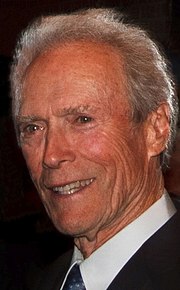Design
Design
Personality
Chart Properties
Your Cross represents the specific theme of your life. This cross embodies your unique potential & the lessons you're here to learn, providing a roadmap to fulfilling your life purpose.
We use the UTC birth time and date to do the calculations required to generate your Human Design chart.
Buy Tokens
Pay as you use, no expiry and no subscription required.Prompt Ideas
Get inspired with some epic prompt ideas.Harold Fischer's Biography
United States Air Force fighter pilot and flying ace of the Korean War. He accrued 11 victories in the war. He is also one of the two flying aces to be Prisoners of War during the war. He was released in 1955 and continued to serve in the USAF until 1978.
Fischer enlisted in the U.S. Navy Reserve on 17 April 1943 and entered the V-5 Aviation Cadet Program on 8 October 1943. Fischer left the V-5 program on 10 July 1944 and reverted to civilian status. He was commissioned a 2nd Lieutenant in the U.S. Army on 16 February 1949 and transferred to the U.S. Air Force on 23 June 1949. Fischer completed pilot training at Williams AFB, Arizona in December 1950.
Fischer was assigned to the 80th Fighter Bomber Squadron in Korea in April 1951. Based at Kimpo Air Base, he flew ground attack missions in the Lockheed F-80 Shooting Stars until May 1952, when he was assigned to the 41st Fighter Interceptor Squadron, flying the North American F-86 Sabre.
Serving with the 39th Fighter Interceptor Squadron of the 51st Fighter Interceptor Wing at Suwon Air Base, Fischer shot down eleven MiG-15s, while flying more than 175 combat missions. On 7 April 1953, he was shot down and ejected from his F-86 Sabre north of the Yalu River, in a dogfight with three MiGs that extended into Chinese territory, an area that the Air Force had specifically ordered its pilots not to enter. Peasants surrounded him; then Chinese soldiers pulled up in a jeep. Ten days later, he was taken to the prison near Mukden.
Fischer was taken captive by Chinese military personnel and imprisoned near Shenyang, Liaoning Province. After a thwarted escape attempt nine months into his captivity, he was routinely tortured and ultimately admitted to trumped up charges that he had been ordered to enter Manchuria and that he had participated in germ warfare. After a short mock trial in Beijing on 24 May 1955, Fischer and the other pilots — Lt. Col. Edwin L. Heller, 1st Lt. Lyle W. Cameron and 1st Lt. Roland W. Parks — were found guilty of violating Chinese territory by flying across the border while on missions over North Korea. He spent 784 days in captivity and was released on 30 May 1955, nearly 2 years after the Korean War ended.
After his release, Fischer received an Air Force Institute of Technology assignment to Iowa State College. He received his degree and then remained at the college, serving as an instructor in the Air Force ROTC program there from August 1957 to August 1960. Fischer next served as a Target Analyst at Offutt AFB, Nebraska, from August 1960 to November 1961, and then as an Intelligence Officer at Ramstein AB, West Germany, until August 1962. He received another AFIT assignment to Oklahoma State University, where he received his PhD in February 1966.
In the Korean War Fischer was assigned as an Air Force Advisor to the Republic of Vietnam Air Force at Bien Hoa AB, South Vietnam, from September 1971 to October 1972. Fischer served mainly as a helicopter pilot and flew more than 200 missions over South Vietnam.
Fischer married and divorced three times and had several children. He died on 30 April 2009 in Las Vegas, Nevada, from complications after back surgery at the age of 83.
Link to Wikipedia biography
Your Cross represents the specific theme of your life. This cross embodies your unique potential & the lessons you're here to learn, providing a roadmap to fulfilling your life purpose.
We use the UTC birth time and date to do the calculations required to generate your Human Design chart.
Prompt Ideas
Get inspired with some epic prompt ideas.





